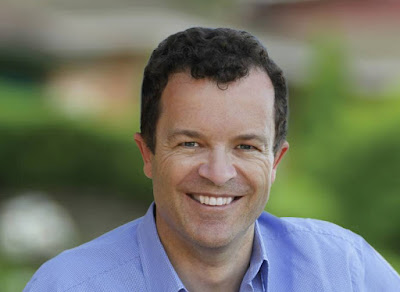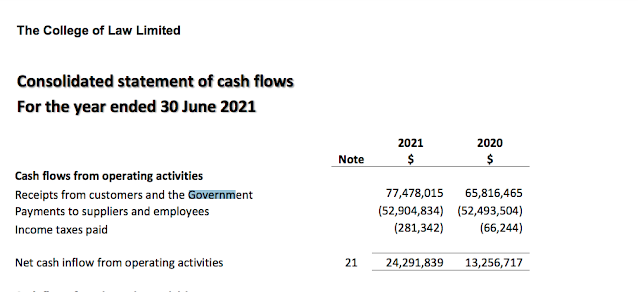Crikey and The Australian stories on the ‘fixated persons units" taken together raise serious questions as to whether the FPUs have have been hijacked, or gone astray
Comment
These two stories suggest that the fixated persons units have taken a different trajectory from what was originally intended.

These two stories suggest that the fixated persons units have taken a different trajectory from what was originally intended.
How police pre-crime units targets citizens allegedly too obsessed with public officials
Serious questions arise over potential misuse of power by police departments created to identify and neutralise "fixated" individuals, writes freelance journalist Asher Wolf.

NSW Police Commissioner Mick Fuller
Imagine, a knock at the door. Five police officers stand outside demanding you take a psychiatric assessment.
Sounds like the sort of thing you’d expect from a police state. Certainly not something you’d find in a modern liberal democracy like Australia, right?
Yet according to Queensland lawyer Chris Nyst that’s allegedly what happened to one new client who turned up at his office.
Even more alarmingly, according to Nyst, his client “… had recently made a number of official complaints about the behaviour of a certain public servant, who he contended had been abusing his powers in the line of duty”.
The incident has raised serious concerns relating to the protection of civil liberties.
Apparently, Nyst’s client had somehow come to the attention of Queensland’s Fixated Threat Assessment Centre (QFTAC.) According to Nyst, QFTAC “… is an agency staffed by Queensland Police officers and clinicians from the Queensland Forensics Mental Health Service to identify people who are thought to ‘fixate’ on government officials and other public identities”.
Before the Lindt cafe seige committed by Man Haron Monis, QFTAC was one of only two such law enforcement forensic psychiatric threat assessment units in the world. In late April 2017, the New South Wales state government established the Fixated Person’s Unit, which has resulted in at least six charges and tens of dozens of people being investigated. Victoria has also announced the establishment of a Fixated Threat Assessment Centre in recent days.
How does this breed of police agency operate?
How exactly Nyst’s client came to the attention of police remains a mystery for now. Did Nyst’s client come to QFTAC’s attention via social media posts, a tattling colleague, or via a concerned family member? So far, that information hasn’t been made public.
A general request for public information to Queensland Police Service’s media liaison regarding QFTAC’s scope and method of operation received a response directing further enquiries to the Right to Information Unit.
What we do currently know is that, after the incident, Nyst’s client felt it necessary to seek legal advice.
How QFTAC discerns between the committed individual exercising their democratic right to engagement with public officials, versus justifiably worrying threat actors, is yet another unknown.
Interestingly, the 2015 QPS Violent Confrontations Review also found that over a 12-month period, almost half of people referred to the unit had a serious mental illness; 16% of all cases were considered high risk; 50% were considered moderate risk.
QPS doesn’t reveal how many completely mentally healthy, low-risk individuals were referred to the unit for making complaints about public servants and politicians. Can one assume 34% of people referred to QFTAC had little or no mental health issue and posed no threat at all?
The existence of pre-crime units such as QFTAC raises thorny questions about who can refer a person for assessment and the potential for over-policing of mentally unwell individuals. It also creates a range of possibilities for abuse of the system: a potentially Kafka-esque system of referring activists and whistleblowers who rock the boat to enhanced surveillance by law enforcement and mental health services.
Could their scope be expanded?
While the need to identify potential lone wolf terrorists is a pressing issue for both state and federal law enforcement agencies, it remains to be seen if QFTAC has implemented the advice in the 2014/15 the Queensland Police Service (QPS) review into violent confrontations, which recommended “extending the Queensland Fixed Threat Assessment Centre (QFTAC) principles to more than just Public Office Holders, identifying persons involved in domestic violence at risk of escalating to a crisis point, (for example rejected stalking and homicide.)”
It would be excellent to ensure people other just law makers and celebrities receive appropriate protection from stalkers and violently fixated individuals. Like ex-partners. Which seems like a rather a pressing issue, considering 18 Queensland women were killed as a result of domestic violence in 2016/17. Meanwhile, the number of high-profile people, public servants or government officials who died as a result of terrorism in Queensland in the last decade? Zero.
When NSW’s Fixated Person’s Unit was established earlier this year, NSW Police Commissioner Mick Fuller stated that if family, friends or work colleagues called about a person of interest, they wouldn’t necessarily “kick your door down”.
So have doors been kicked down as a result of concerned citizens asking a few too many questions? So far no oversight reporting mechanisms have been publicly detailed for QFTAC, NSW’s Fixated Persons Unit, or Victoria’s new Fixated Threat Assessment Centre.
Six charged as new police unit targets threat of ‘fixated persons’
- 12:00AM OCTOBER 3, 2017
- NO COMMENTS
Six people have been charged and 32 investigated — including about 16 who were considering carrying out acts of Islamist terror — in the first six months of the NSW Police’s fixated persons unit, a key weapon against a terrorist attack.
NSW Police Commissioner Mick Fuller said it was clear Sydney was a major target but he hoped the unit he set up six months ago with the co-operation of the NSW Health Department could prevent attacks. It has been targeting an average of two people of concern a week.
Apart from those interested in committing acts of terror, the unit has dealt with a youth obsessed with the Columbine school massacre and charged a man who was obsessed with harming a judge. The 17-strong unit aims to identify people who could be at risk of committing terrorist acts at the infancy of their interest in extreme ideology, not when it is too late.
“Sydney is and will continue to be a focus of the terrorists,” the NSW Police Commissioner told The Australian.
“Sydney is mentioned in the correspondence of the terrorists ... that is open-source information. We have got to do everything we can to stop the next terrorist incident happening.
“I have no doubt that the work the fixated persons unit has done in the last six months has stopped serious incidents from occurring.”
Mr Fuller said that as well as attempting to stop terror attacks, the unit would work to prevent attacks such as the Bourke Street tragedy in which a car was driven into crowds in Melbourne in January. The city was rocked again on Saturday when a youth armed with a knife was tasered by police after driving erratically near Melbourne’s Federation Square.
Malcolm Turnbull will host state leaders in Canberra on Thursday for a special Council of Australian Governments meeting on counter-terrorism.
The Prime Minister is pushing for a clear national approach to counter-terrorism laws, with preventive detention orders, crowd safety in public places and aviation safety to be discussed. A previous stoush had NSW authorities calling for 28-day preventive detention orders. They are now 14 days in NSW, but federal Attorney-General George Brandis has said it was unconstitutional under commonwealth law to have anyone detained more than eight days.
Mr Fuller said the fixated person’s unit had the ability to pick up people who “may not profile” as a terrorist threat but could be capable of a lone-wolf attack.
NSW Chief Psychiatrist Murray Wright said the unit had been often targeting young “vulnerable” people whose behaviour had been reported by their families or schools or who had come to light through the work of intelligence agencies.
Dr Wright said previously police and mental health departments had dealt with individual cases of risk but never shared information.
“The one thing that causes us most concern are the people who have some kind of vulnerability and (see extreme acts as) a solution to whatever it is that is troubling them,” Dr Wright said.
“You can have ... young people who are isolated from their peer group, that might be suffering some kind of mental health issues.
“There might be terrible things happening at home. They can kind of be sold on the sales pitch of some (terror) organisations.
“They (the terror organisations) tell people they’re doing good things for humanity. Sometimes it’s someone who is experiencing a psychotic illness and treating that illness can change their perspective on what they’re doing.”
Dr Wright said it had been shown in similar models overseas and in Queensland, that the co-ordination between police and health departments could prevent people making “bad decisions”.
Although Queensland Police has a unit of four people conducting similar work, other states are yet to follow suit, although Victoria Police and WA Police have passed on information to their NSW counterparts to be dealt with by the unit, as has the Australian Federal Police.
With robberies in NSW down to 3500 a year, Mr Fuller within a week of becoming commissioner in April disbanded the metropolitan robbery unit and put its officers under a detective inspector into the fixated persons unit.
“The great challenge is stopping the next terrorist incident and the fixated persons unit is playing an important role to shine a light on a group of people who didn’t have that focus in the past,” Mr Fuller said. “We have got a 17-strong unit (led by) a detective inspector. If we’re going to have a modern law enforcement workforce ... we have to have the courage to say this is where police should be deployed.’’
Since the unit’s inception, it has been involved in 32 investigations, with six people charged. It has conducted two firearms prohibition searches, five mental health family conferences and made one referral to the Department of Immigration.
Where charges are preferred, police prosecutors are encouraged to request community treatment orders be made by magistrates to deal with mental health problems.
Proceedings have included a September 20 charge against a man for reprisal against a judge, false information resulting in police investigation and breaching a personal violence order.
The victim is alleged to have been a magistrate who sentenced the man to 15 months’ jail in 2015.
The police say that the individual fixations being dealt with by the unit range from “extreme ideology of religion and sovereign citizen status to perceived grievances with public office holders and government departments”.
Other examples of investigations over the past six months include a person fixated on the Queensland Premier’s Office believing they were swindled out of a $30 million Lotto win; fixated people targeting state MPs’ offices, young people fixated on the Columbine school massacre, people fixated on mental health staff — believing they have a legitimate grievance regarding their mental health diagnosis, and people fixated on a religion to the point where they have disrupted services at churches belonging to other faiths.
Over the past six months there have been examples of cases that have required mental health-only intervention, mental health in conjunction with police intervention and cases where mental health would have no impact and police-only intervention has been required.
Dr Wright said there were concerns over the sharing by health professionals of confidential information with police but a test around that co-operation had been set.
“We have thought long and hard about this and we continue to think long and hard about it,” Dr Wright said. “We will only do this (share health information) where (we) are convinced there is a serious risk of harm.”



Comments
Post a Comment